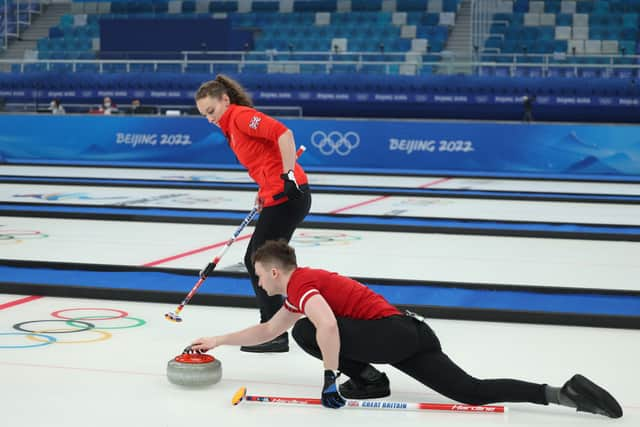Curling rules at Winter Olympics 2022: how many ends are there, what is the hammer - scoring and power play
This article contains affiliate links. We may earn a small commission on items purchased through this article, but that does not affect our editorial judgement.
and live on Freeview channel 276
Great Britain’s curling mixed doubles pair began 2022 Beijing Winter Olympics ahead of the Games’ opening ceremony.
Team GB’s mixed doubles curling pair Bruce Mouat and Jennifer Dodds lost at the semi final stage to Norway in a close 6-5 result. Mouat and Dodds will play Sweden in the bronze medal match on Tuesday (8 February).
Advertisement
Hide AdAdvertisement
Hide AdThe women’s and men’s curling is set to begin Thursday (10 February).
For those who are hoping to enjoy the remaining curling events, we have information on some of the key rules...
How does curling scoring work?
The object of curling is to land the stone as close to the button/tee. However, some stones will be thrown with the intention of knocking the opponent’s stone outside of the house or to guard their own stone.


A point is awarded to the team with the stone closest to the button, while additional points can be earned by other stones inside the house that are closer to the button than all of the opposition’s stones.
What is the hammer throw?
Advertisement
Hide AdAdvertisement
Hide AdThe team that failed to score in the previous end has the advantage of going last.
The last go is known as the hammer throw as all the opposition stones have been thrown, giving that team an advantage in the end.
How many curling ends are there per game?
There are 10 ends in the women’s and men’s events, with each player throwing two stones per end.
In the mixed doubles event, there are eight ends with each player throwing five stones per end.
What is the power play option in mixed doubles?
Advertisement
Hide AdAdvertisement
Hide AdThe ‘power play’ option is one of the newer rule changes in mixed doubles.
When used, each team is allowed to decide on the placement of some of the stationary stones to position the stones.
During a power play, the in-house stone - that belongs to the team with the last stone in that end - is placed with its back edge on the tee line.
Half of the stone is in the eight-foot circle and half is in the 12-foot circle.
Advertisement
Hide AdAdvertisement
Hide AdThe guard stone is at the side of the sheet and protects the in-house stone.
A message from the editor:
Thank you for reading. NationalWorld is a new national news brand, produced by a team of journalists, editors, video producers and designers who live and work across the UK. Find out more about who’s who in the team, and our editorial values. We want to start a community among our readers, so please follow us on Facebook, Twitter and Instagram, and keep the conversation going. You can also sign up to our newslettersand get a curated selection of our best reads to your inbox every day.
Comment Guidelines
National World encourages reader discussion on our stories. User feedback, insights and back-and-forth exchanges add a rich layer of context to reporting. Please review our Community Guidelines before commenting.
